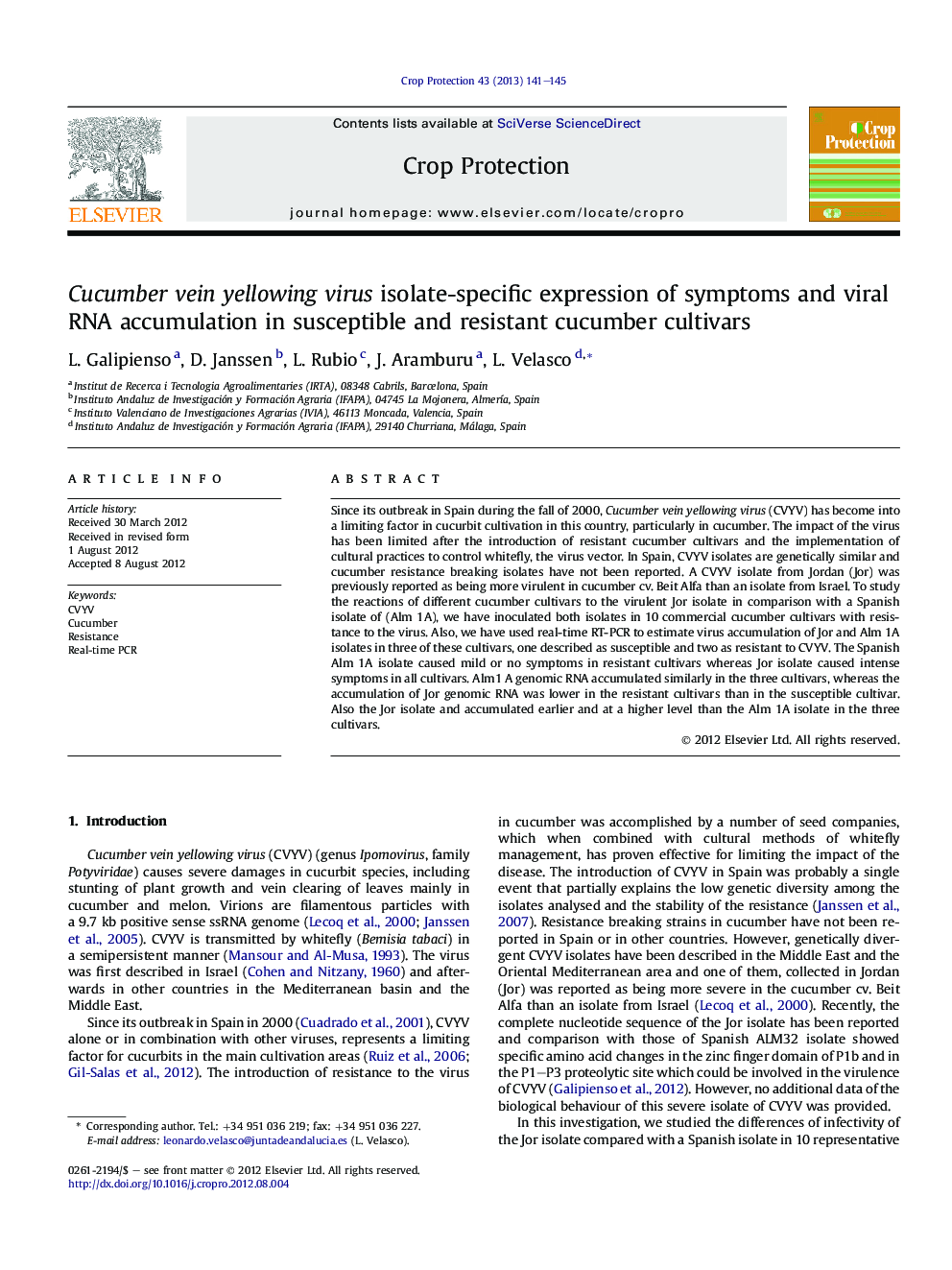| Article ID | Journal | Published Year | Pages | File Type |
|---|---|---|---|---|
| 4506112 | Crop Protection | 2013 | 5 Pages |
Since its outbreak in Spain during the fall of 2000, Cucumber vein yellowing virus (CVYV) has become into a limiting factor in cucurbit cultivation in this country, particularly in cucumber. The impact of the virus has been limited after the introduction of resistant cucumber cultivars and the implementation of cultural practices to control whitefly, the virus vector. In Spain, CVYV isolates are genetically similar and cucumber resistance breaking isolates have not been reported. A CVYV isolate from Jordan (Jor) was previously reported as being more virulent in cucumber cv. Beit Alfa than an isolate from Israel. To study the reactions of different cucumber cultivars to the virulent Jor isolate in comparison with a Spanish isolate of (Alm 1A), we have inoculated both isolates in 10 commercial cucumber cultivars with resistance to the virus. Also, we have used real-time RT-PCR to estimate virus accumulation of Jor and Alm 1A isolates in three of these cultivars, one described as susceptible and two as resistant to CVYV. The Spanish Alm 1A isolate caused mild or no symptoms in resistant cultivars whereas Jor isolate caused intense symptoms in all cultivars. Alm1 A genomic RNA accumulated similarly in the three cultivars, whereas the accumulation of Jor genomic RNA was lower in the resistant cultivars than in the susceptible cultivar. Also the Jor isolate and accumulated earlier and at a higher level than the Alm 1A isolate in the three cultivars.
► A CVYV isolate from Jordan produces severe symptoms in resistant cucumber cultivars. ► Infection in cucumber cultivars by the Jordan and a Spanish isolate is compared. ► The Jordan isolate RNA accumulates more and earlier than for the Spanish isolate.
